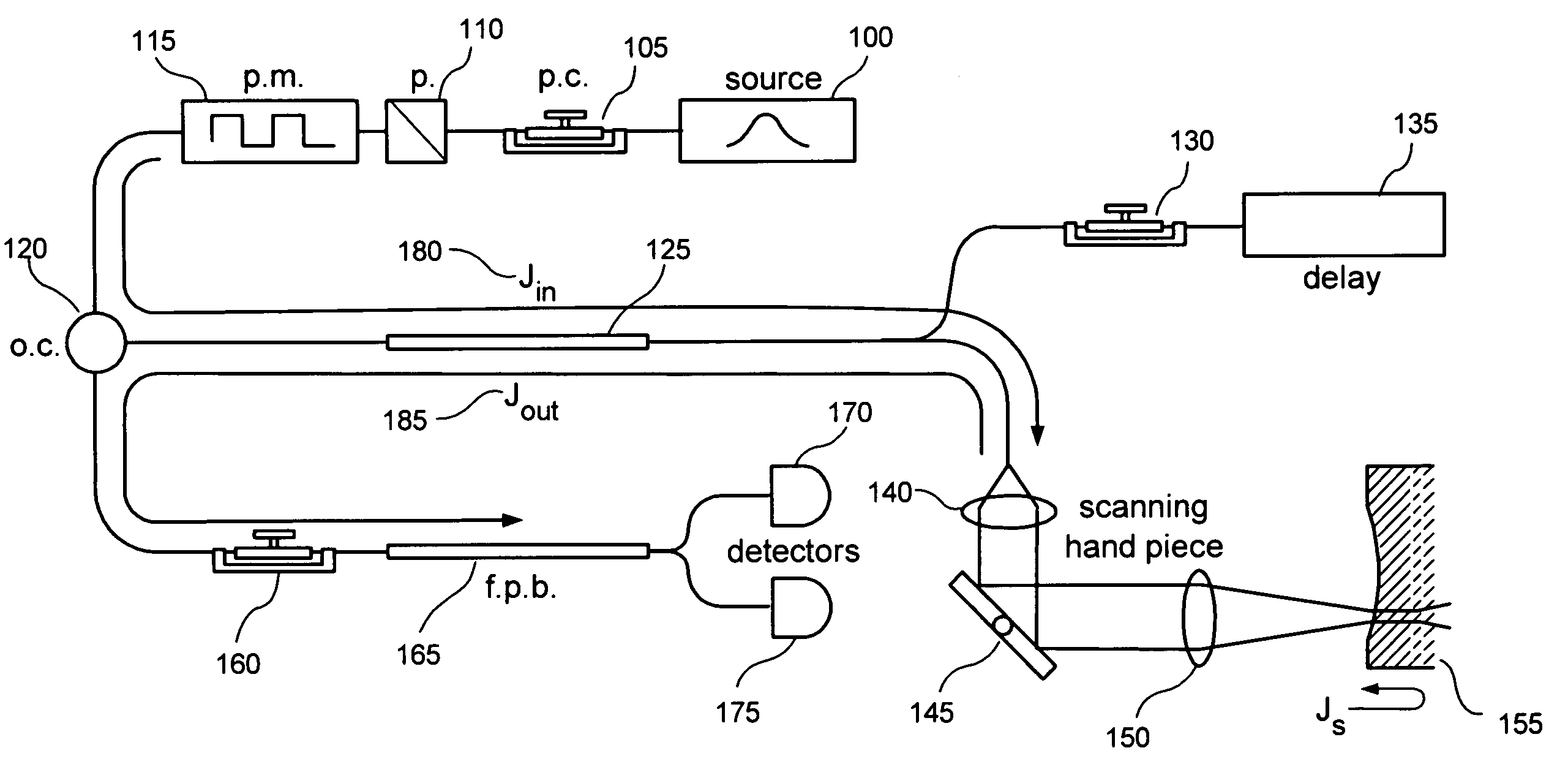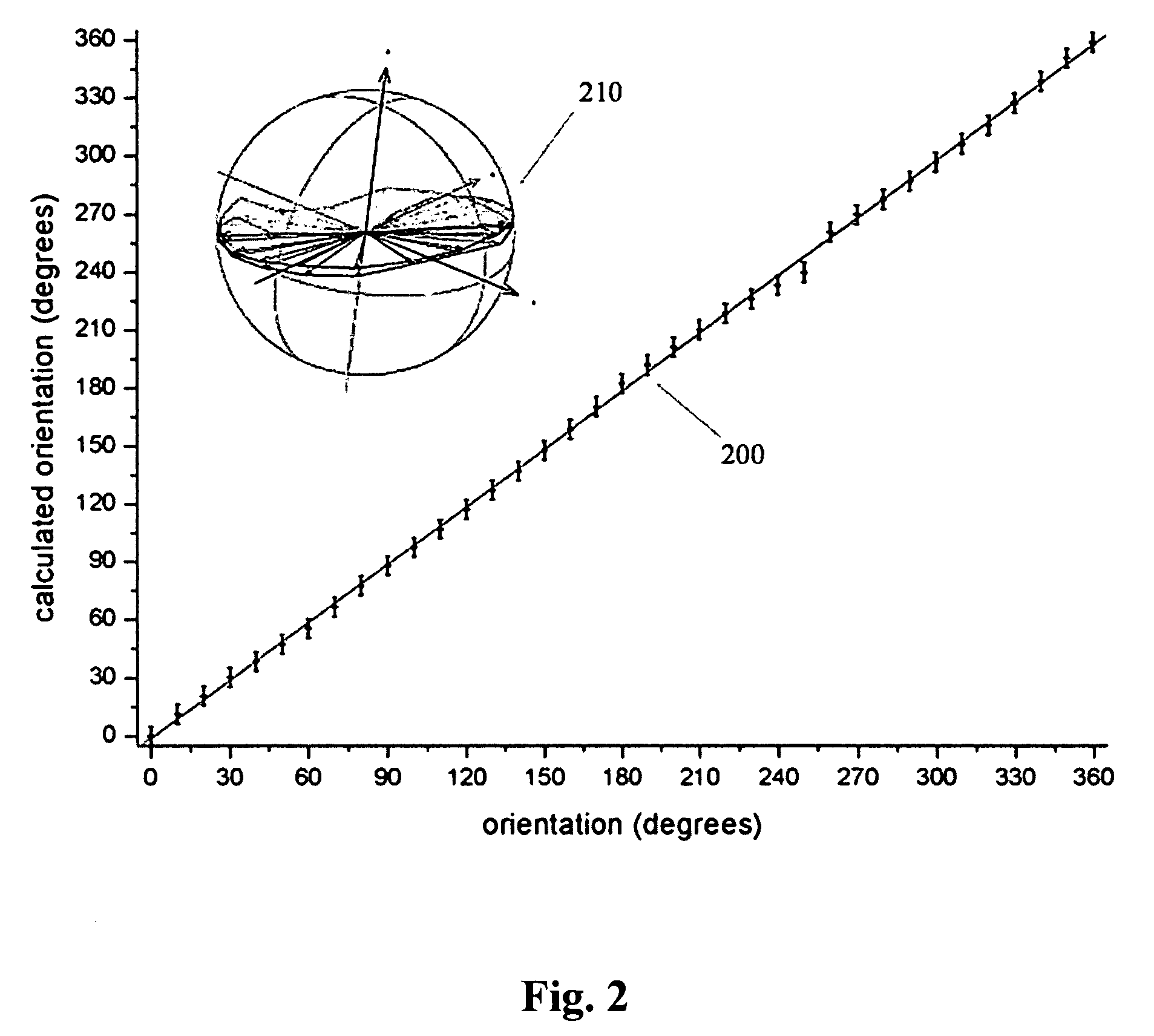System and method for providing Jones matrix-based analysis to determine non-depolarizing polarization parameters using polarization-sensitive optical coherence tomography
- Summary
- Abstract
- Description
- Claims
- Application Information
AI Technical Summary
Benefits of technology
Problems solved by technology
Method used
Image
Examples
Embodiment Construction
[0039] The exemplary embodiments of systems, software arrangements and processes can be implemented in a variety of OCT or OFDI systems. FIG. 1 shows an exemplary embodiment of a fiber-based polarization-sensitive time-domain OCT arrangement which is and / or that can be used for implementing the exemplary embodiments of the system, process, and software arrangement according to the present invention.
[0040] The exemplary embodiments of the method, system and arrangement according to the present invention can be implemented in a variety of imaging systems. For example, as shown in FIG. 1, the exemplary arrangement which is and / or may be used with exemplary embodiments of the present invention is provided with components of an exemplary fiber-based OCT system, and a standard single-mode fiber may be used throughout such arrangement. In particular, the arrangement includes a light (e.g., broadband) source 100 which is adapted to generate an electromagnetic radiation or light signal. A p...
PUM
 Login to View More
Login to View More Abstract
Description
Claims
Application Information
 Login to View More
Login to View More - R&D
- Intellectual Property
- Life Sciences
- Materials
- Tech Scout
- Unparalleled Data Quality
- Higher Quality Content
- 60% Fewer Hallucinations
Browse by: Latest US Patents, China's latest patents, Technical Efficacy Thesaurus, Application Domain, Technology Topic, Popular Technical Reports.
© 2025 PatSnap. All rights reserved.Legal|Privacy policy|Modern Slavery Act Transparency Statement|Sitemap|About US| Contact US: help@patsnap.com



